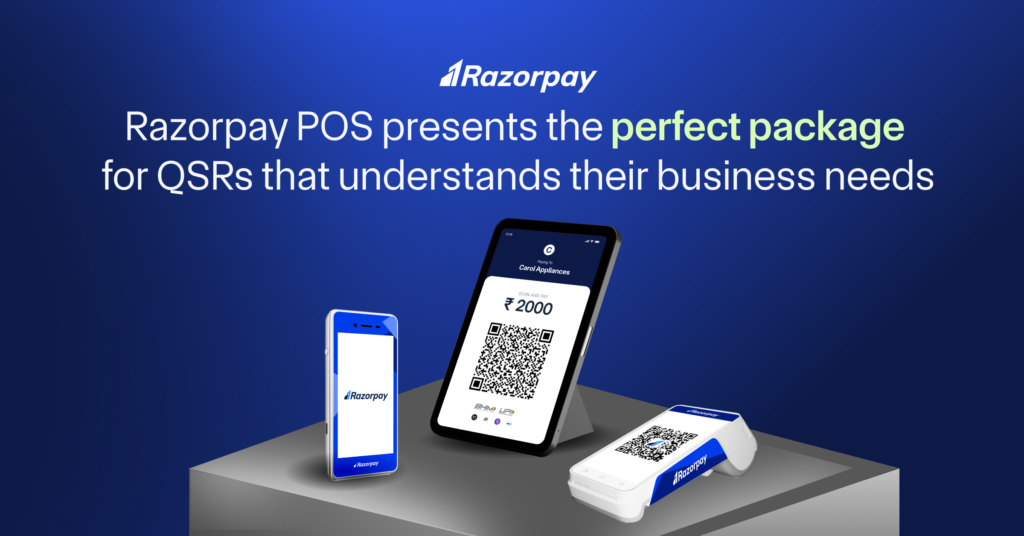It all starts at 1 PM.
The lunch rush begins. Office workers line up at the food court. The momo counter is working overtime. At the biryani stall, the queue stretches all the way to the entrance.
One customer asks for a bill that never printed. Another says their UPI payment went through but no one can confirm it.
For QSRs, peak hour isn’t just about moving fast—it’s about keeping everything in sync. And that’s where most outlets struggle.
There’s a card machine at the counter. A QR code pasted on the glass. Staff note down payments on scraps of paper. The manager is switching between Excel sheets and WhatsApp messages trying to track who collected how much, and when.
It’s not that QSRs don’t use technology. They do.
But the problem is — none of it works together.
The real challenge of scale isn’t payment—it’s accountability
Talk to any mid-sized QSR operator—especially one running more than five outlets—and a consistent theme emerges: reconciliation pain.
The question isn’t “Did we get the money?”
The question is:
- Who collected it?
- When was it collected?
- Was it settled correctly against the bills generated?
And when customers pay using different methods—cards, UPI, wallets, QR, sometimes even cash—the cracks start to show.
This is where the more thoughtful chains are making a shift. Not to a new app. But to a cohesive hardware + software stack—one that reimagines how QSRs should run when they’re busiest.
Printers are slow. WhatsApp is faster.
A subtle shift is also underway in how bills are issued.
Thermal printers, prone to ink fade and paper jams, are being replaced by BillMe-style digital invoicing. One tap, and the invoice is sent over SMS or WhatsApp. It feels seamless to the customer. But to the business, it means two things:
- A verified contact number per order
- A digital logbook of every transaction, searchable and synced
What started as a ‘green initiative’ is quickly becoming a smart data acquisition layer.
Smaller devices. Bigger flexibility.
Another insight from the trenches: billing doesn’t need to be tied to a counter.
With the rise of open-air kiosks, express food courts, and outdoor events, QSRs increasingly need devices that travel with staff—not the other way around.
Here, the Android Smart Mini POS plays a role. Compact. Battery efficient. Ready for card, UPI, and Tap-to-Pay. It’s now showing up behind juice bars in Goa, coffee vans in Bangalore, and even pop-ups at literature festivals.
A QR code that does more than just scan
If you’re imagining a flimsy paper QR taped next to the billing machine, think again.
The modern version—called Growth DQR—is increasingly acting as a brand extension. It’s dynamic. It processes instant refunds. It integrates with backend dashboards. And most importantly, it carries the merchant’s offers and loyalty, creating a small but lasting memory in the customer’s mind.
In some stores, that QR is now the first interaction between brand and buyer.
Not about disruption. Just orchestration.
Unlike tech disruptions that promise to overhaul everything, the POS stack evolution in QSRs is quiet. Incremental. Modular. But high-impact.
Operators aren’t looking to reinvent the wheel. They want:
- Faster throughput at the counter
- Visibility across outlets
- Fewer disputes and more control
And they want it without training their staff on five different platforms.
That’s why QSRs moving to an integrated POS stack—like Razorpay’s—aren’t doing it for the bells and whistles. They’re doing it because it lets them operate with clarity at the exact hour everything else gets messy.
Because growth doesn’t wait for you to reconcile
In the end, the lunch rush will never slow down. Orders will fly in. Payments will keep changing.
But what QSRs can change is how calmly they run that chaos.
And increasingly, they’re doing that by getting the tech out of the way—and letting the system do the thinking.


